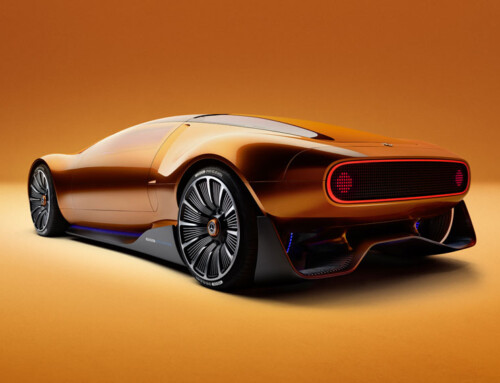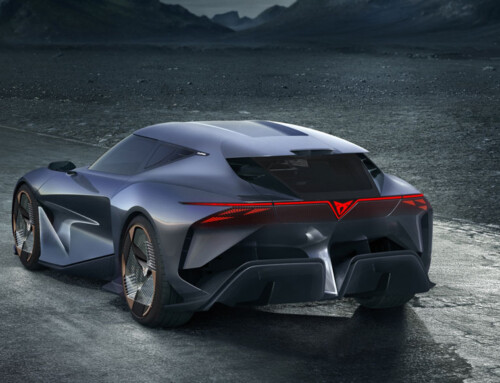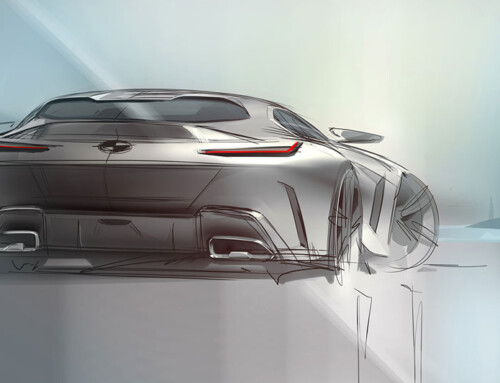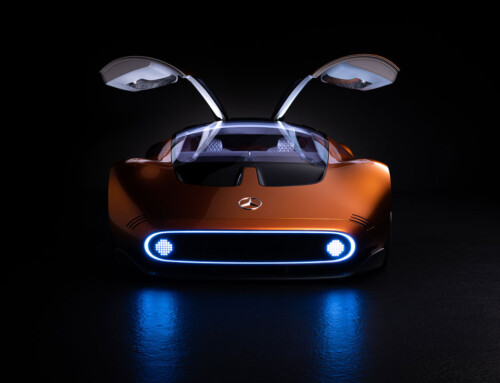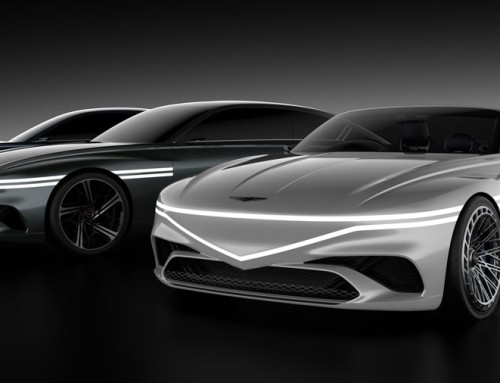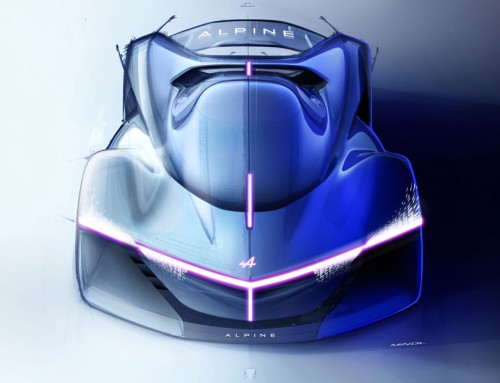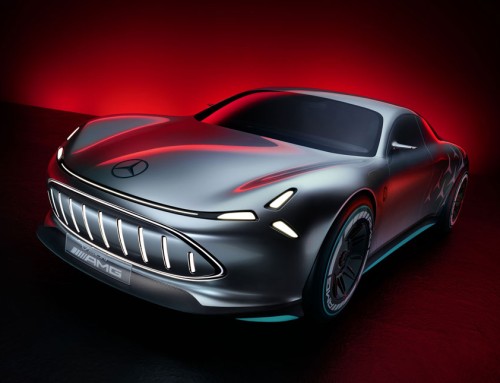

Then, directly comparable with the Renault Espace, came the first Nissan Prairie in October 1982 and the first Chrysler Voyager appeared in November 1983. But, in relation to these two models, the Espace brought another dimension, availing itself of a fundamentally different spirit. Whilst the Prairie and the Voyager could be considered ‘tall estates’, the Espace declared itself another species: it claimed the title of ‘monovolume saloon’.
Unlike the other two models that predated it, the Espace did not possess sliding rear doors but had four pull-out doors.
Moreover, it rejected a bonnet angled to the windscreen and detached from the overall volume, adopting a resolutely monolithic profile.
A question of typology
Neither estate nor saloon, the Espace introduced a new bodywork type. One of the Espace’s strengths had been to reject every utilitarian reference. While the Chrysler Voyager declared itself a ‘minivan’, basically a glazed version of a panel van, the Espace was a special kind of car and not anything else.
In this respect, the Fiat/Peugeot alliance would assume a profoundly different stance as the Citroën Évasion, Fiat Ulysse and Peugeot 806 went on to provide utilitarian derivatives. Not to mention the Mercedes-Benz V-class vehicle that openly acknowledges its kinship to the ‘Vito’ van just as the large Japanese MPVs from Toyota, Mazda, Mitsubishi, Nissan or Honda do.
From the very genesis of the Espace, its conceivers had set the tone. Philippe Guédon, chairman of Matra, had wanted to give a European interpretation of the American ‘van’ which was playful, recreational and liberating. Remember, this was happening in the 1970s.
With its profiled front end that evoked the French Train à Grande Vitesse (TGV), the Espace at once seemed made for long journeys. And it was this grand tourer connotation that made its mark: a family car, but a road car, too.
The interior layout was just right: convivial, modular, comfortable. Since then the advertising campaigns have never ceased to exalt this aspect.
Optimised concept
In its latest guise (project J66), the Espace is still something else on the automotive planet. Its over cautious exterior styling is not to be trusted; experienced from the inside, the third generation Espace resembles nothing else known. On the outside, the changes do seem minor given that the bodywork has been totally redesigned. The structure is the same as the previous model’s, which makes for comparable glasswork, notably at the windscreen level. Yet all the body panels are new. They are more sculpted on the flanks, the front end is more expressive, the lighting and the doors (notably the side doors) are more carefully designed, the general forms are more supple and more sensual. Yet the designers aimed at preserving the Espace’s own ‘style’ as much in the general outline as in the details. Thus one discovers characteristic door mirrors (now perforated with ventilation ducts) that perform a major aesthetic role.
The mechanical platform of the new Espace has been profoundly revised. It now sits on a chassis culled from that of the Laguna: the engine is positioned transversely and no longer longitudinally. Renault is offering three engines: 2 litres, 115 bhp; 2.2 litres turbodiesel, 115 bhp; and 3 litres, 170 bhp.
The dimensions of the 1997 Espace (project J66) are very close to those of the previous model (project P36). Here again there is a deliberate desire to contain the Espace within a manageable size. At 4.52 metres long, the Espace proves a lot more compact than its rivals of American origin (the Chrysler Voyager measures 4.73 m and the Opel Sintra 4.67 m while even the Ford Galaxy/Volkswagen Sharan/Seat Alhambra trio exceeds 4.60 m).
Revolution from within
To sit behind the wheel of the Espace is, more than ever, to be somewhere else, in a unique environment. If the styling of the exterior is not all that daring and reinforces the identity of the Espace, the interior styling, on the other hand, offers notable innovations. While previous editions of the Espace had been reproached for their dashboard being too broad, underscoring an impression of remoteness from the windscreen, this flaw has been corrected on the new model. Someone was bound to think of it, and Matra did: the heating has been doubled. Traditionally, on all modern cars, the set of elements comprising the heating, ventilation and climate control generates the bulkiest component of the interior layout. Systematically, it is positioned at the centre of the dashboard, occupying a vast area of the facia, biting into cabin space and generally masked by the centre console. On the Espace ‘J66’, this element has been separated into two parts, with the pair of units being pushed to the extremities of the dashboard. In this way the central area was liberated and could be dedicated to new use. It is occupied by a cabinet that opens in two, upper and lower, sections. This extremely practical space is completed by drawers located beneath the front seats.
Another stroke of genius, this time more aesthetic, is the wave that undulates across the dashboard leaving only an eyelet to dispense the essential information. The instrumentation has been eclipsed, reduced to its simplest expression; the mechanicals are no longer so pushy. In the same light, the radio has disappeared. Only the steering wheel controls and an (independent) remote control substantiate the Espace’s audio equipment. No longer is one faced with a high fidelity suite that declares its complexity.
In the new model, comfort and modularity make further progress, the impression of space and freedom has been favoured. On the automatic version, the dashboard is unencumbered by the gear lever, which has been positioned above the steering column. Now mounted on rails, the seats enjoy unrestricted mobility. Under attack from smarter looking and bigger engined models, the Renault Espace remains exemplary in terms of interior layout.
The article continues in Auto & Design no. 103

